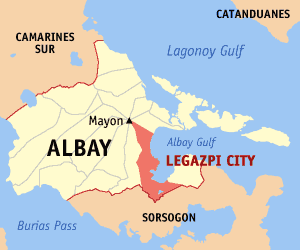Typhoon Durian
Typhoon Durian was a powerful tropical cyclone that caused widespread destruction in parts of Southeast Asia in late November 2006. Known in the Philippines as Typhoon Reming, it was one of the most devastating natural disasters to hit the region that year.
Overview[edit | edit source]
Typhoon Durian was characterized by its intense winds, heavy rainfall, and the significant storm surge it brought upon making landfall. The typhoon developed from a tropical disturbance in the western Pacific Ocean, rapidly intensifying as it moved towards the southeastern countries of Asia. Its path through the Philippines, Vietnam, Thailand, and other parts of Southeast Asia resulted in severe impacts, including catastrophic flooding, landslides, and widespread damage to infrastructure and agriculture.
Impact[edit | edit source]
Philippines[edit | edit source]
In the Philippines, Durian's fury was felt most acutely in the Bicol Region, where it made landfall. The typhoon's intense winds and heavy rains triggered massive landslides and flooding, particularly around the Mayon Volcano, where volcanic debris was washed into villages, causing significant loss of life and property. The official death toll in the Philippines was in the hundreds, with many more missing and thousands displaced.
Vietnam[edit | edit source]
As Durian moved westward, it weakened slightly but still brought considerable damage to Vietnam, particularly in the coastal provinces. The combination of wind damage and flooding affected hundreds of thousands of people, damaging homes, crops, and infrastructure. The Vietnamese government's prompt evacuation efforts helped minimize the human toll, but the economic impact was substantial.
Other Countries[edit | edit source]
The effects of Typhoon Durian were also felt in Thailand, Laos, and Cambodia, though to a lesser extent compared to the Philippines and Vietnam. In these countries, the typhoon caused flooding and property damage, disrupting lives and livelihoods.
Response and Recovery[edit | edit source]
The response to Typhoon Durian involved local, national, and international efforts. In the Philippines, the government and various non-governmental organizations launched rescue and relief operations to assist the affected populations. International aid played a crucial role in providing food, water, and medical assistance to the survivors. Recovery and rebuilding efforts took years, highlighting the need for improved disaster preparedness and response strategies in the region.
Legacy[edit | edit source]
Typhoon Durian is remembered as a reminder of the vulnerability of Southeast Asia to natural disasters, particularly typhoons. The disaster underscored the importance of early warning systems, effective evacuation plans, and the need for resilient infrastructure to withstand the impacts of such events. It also led to increased efforts in the region to address climate change and its role in the frequency and intensity of tropical cyclones.
Search WikiMD
Ad.Tired of being Overweight? Try W8MD's physician weight loss program.
Semaglutide (Ozempic / Wegovy and Tirzepatide (Mounjaro / Zepbound) available.
Advertise on WikiMD
|
WikiMD's Wellness Encyclopedia |
| Let Food Be Thy Medicine Medicine Thy Food - Hippocrates |
Translate this page: - East Asian
中文,
日本,
한국어,
South Asian
हिन्दी,
தமிழ்,
తెలుగు,
Urdu,
ಕನ್ನಡ,
Southeast Asian
Indonesian,
Vietnamese,
Thai,
မြန်မာဘာသာ,
বাংলা
European
español,
Deutsch,
français,
Greek,
português do Brasil,
polski,
română,
русский,
Nederlands,
norsk,
svenska,
suomi,
Italian
Middle Eastern & African
عربى,
Turkish,
Persian,
Hebrew,
Afrikaans,
isiZulu,
Kiswahili,
Other
Bulgarian,
Hungarian,
Czech,
Swedish,
മലയാളം,
मराठी,
ਪੰਜਾਬੀ,
ગુજરાતી,
Portuguese,
Ukrainian
Medical Disclaimer: WikiMD is not a substitute for professional medical advice. The information on WikiMD is provided as an information resource only, may be incorrect, outdated or misleading, and is not to be used or relied on for any diagnostic or treatment purposes. Please consult your health care provider before making any healthcare decisions or for guidance about a specific medical condition. WikiMD expressly disclaims responsibility, and shall have no liability, for any damages, loss, injury, or liability whatsoever suffered as a result of your reliance on the information contained in this site. By visiting this site you agree to the foregoing terms and conditions, which may from time to time be changed or supplemented by WikiMD. If you do not agree to the foregoing terms and conditions, you should not enter or use this site. See full disclaimer.
Credits:Most images are courtesy of Wikimedia commons, and templates Wikipedia, licensed under CC BY SA or similar.
Contributors: Prab R. Tumpati, MD






